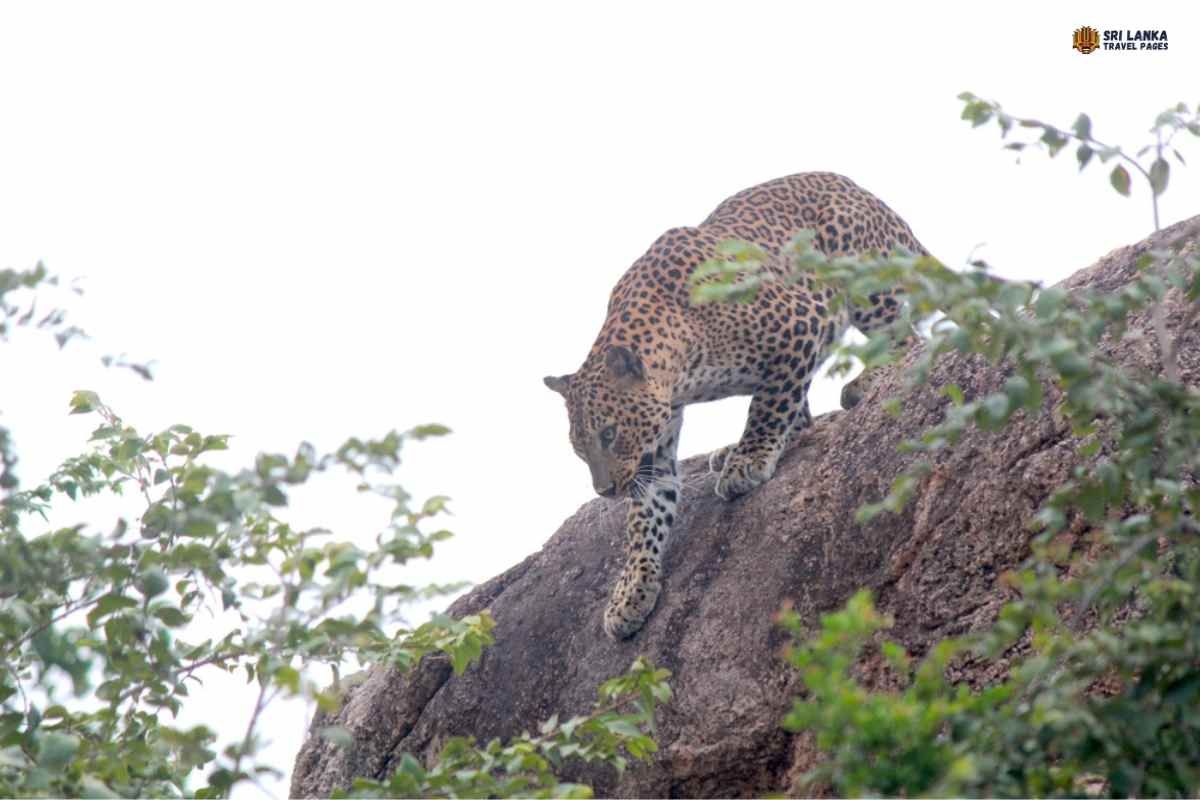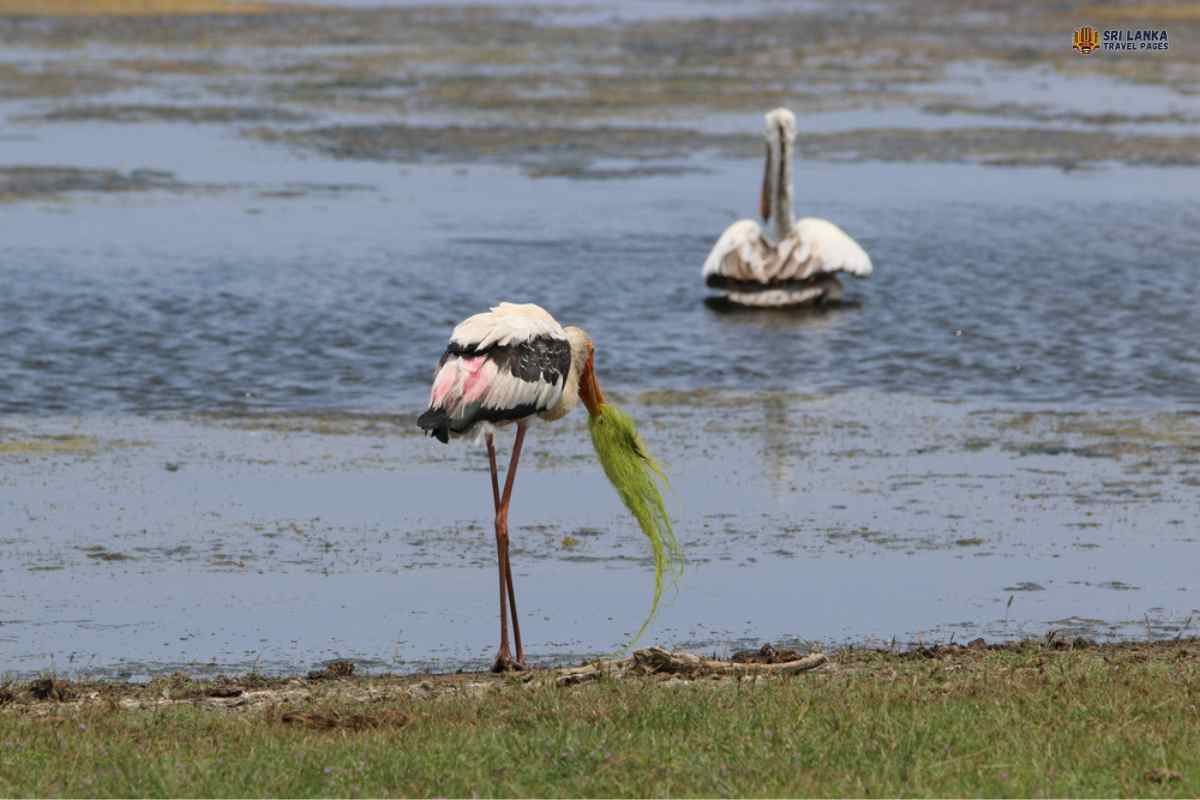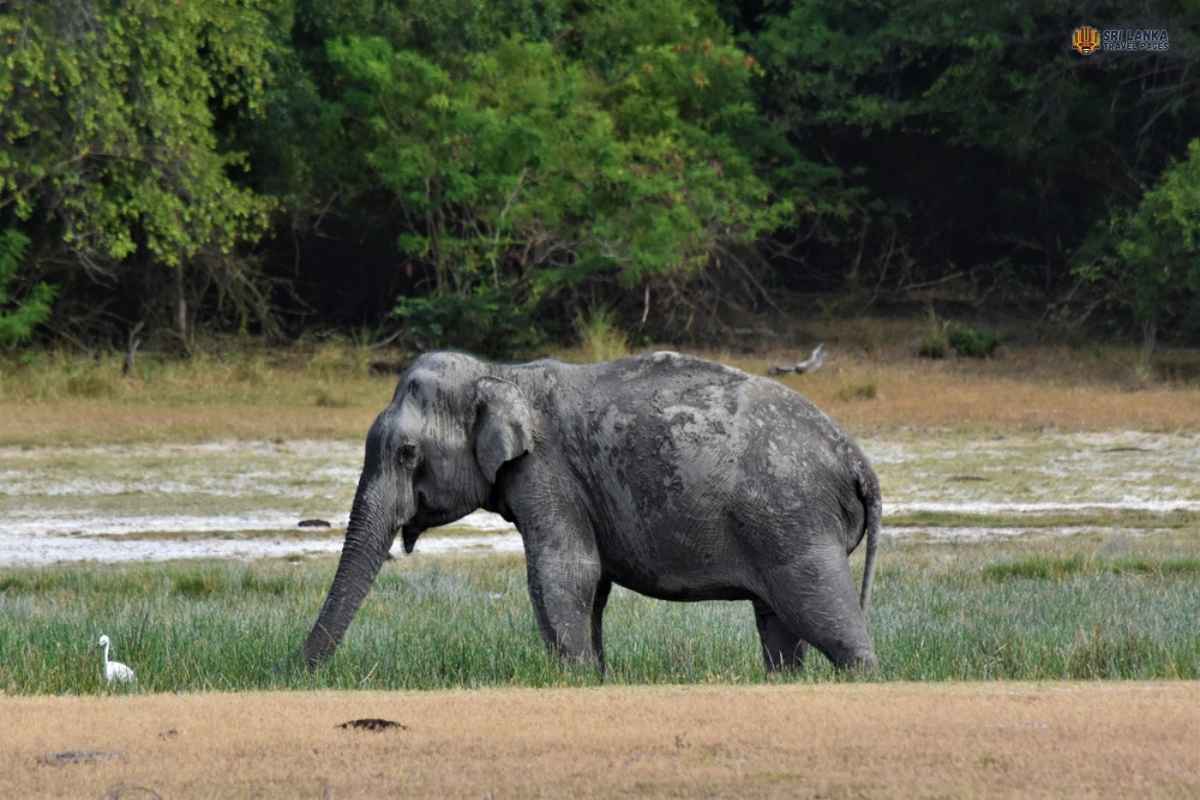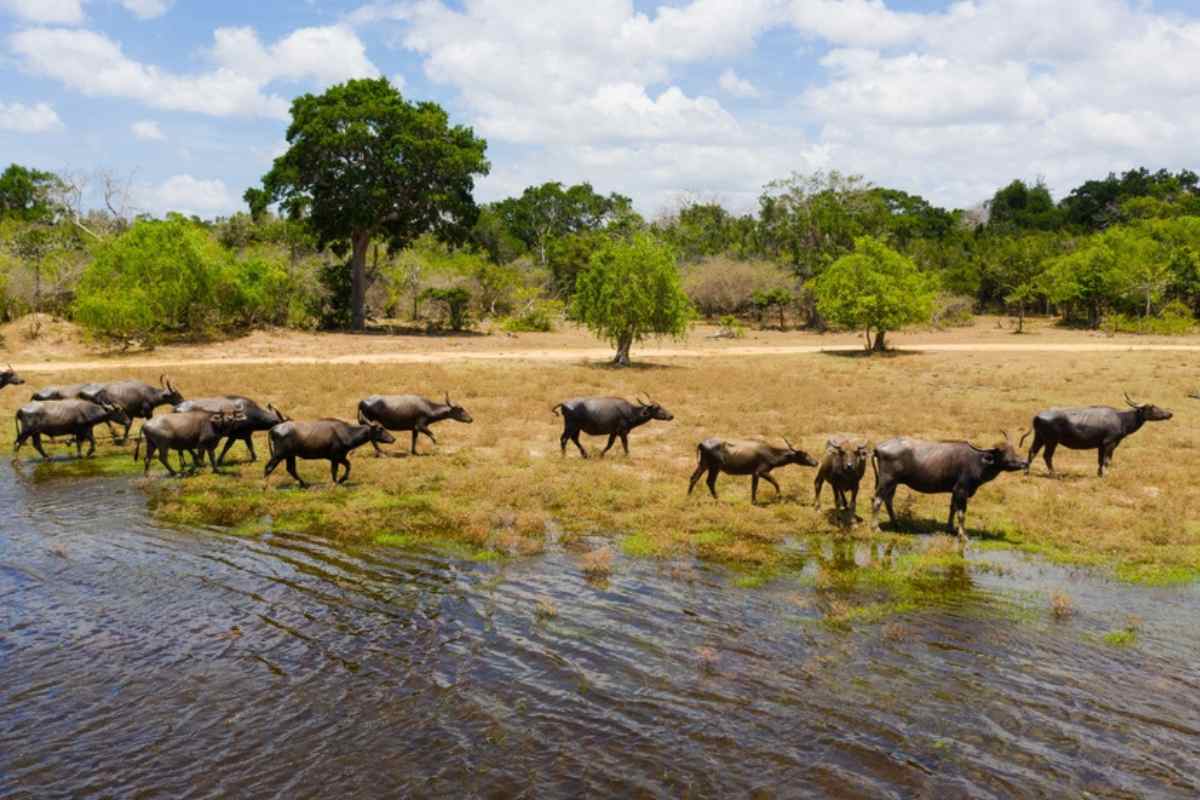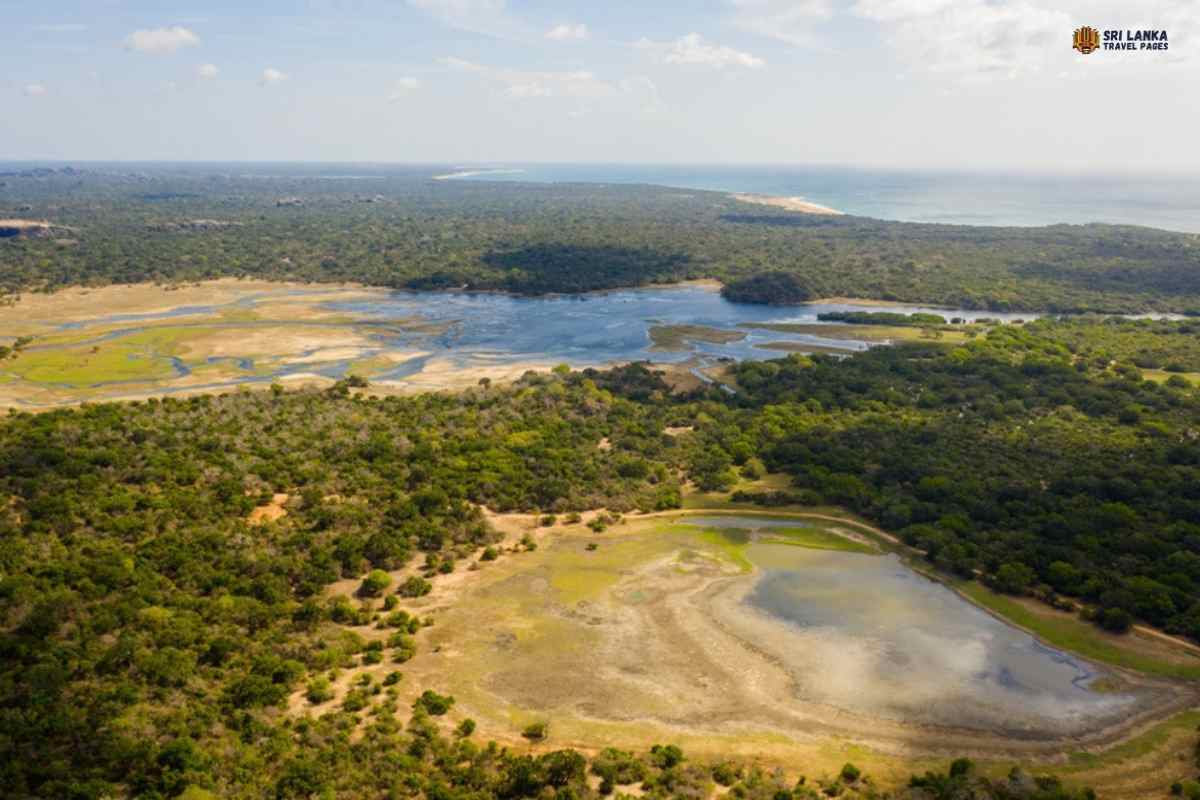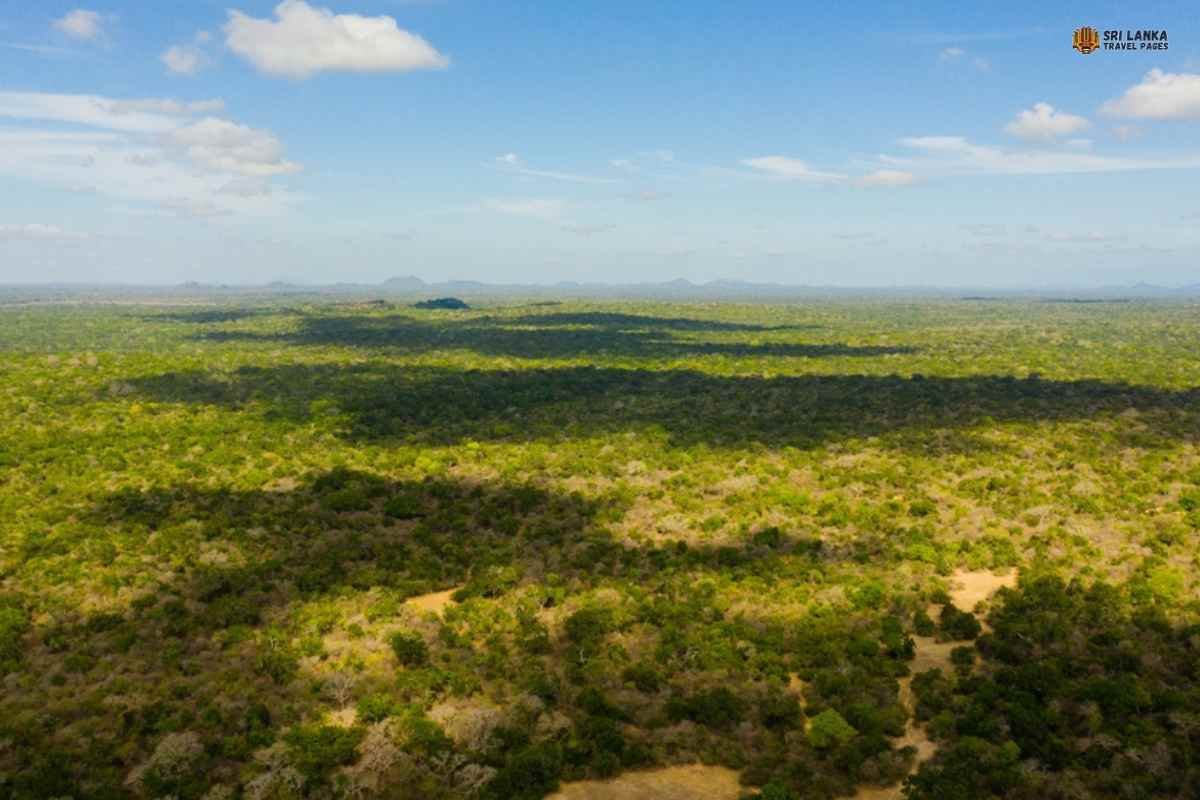
In Sri Lanka’s southeast, a wildlife paradise is Kumana National Park. The park is noted for its birds, especially during the migration season, and its enormous number of elephants, leopards, and other species. The Kumana National Park and Safari should be your must-see locations if you plan a vacation to Sri Lanka. In this post, we will thoroughly examine the park, Safari and provide all the information you require to make travel arrangements.
History of Kumana National Park
Since the region was initially declared a wildlife refuge in 1938, Kumana National Park has a long history. The park, which at the time had an area of around 6,117 hectares, was created to preserve the local wildlife, especially the sizable flocks of waterbirds bred in the area’s lagoons and marshes.
The Department of Wildlife Conservation controlled the park, mainly for bird hunting. Yet because the park was poorly administered and there was a lot of poaching and illegal hunting, the number of birds in the area decreased.
The Mahaweli Development Authority took over the park’s administration in 1970, intending to use the park’s resources for irrigation and agriculture. Consequently, the park’s soil was cleared for farming, and its water sources were changed for irrigation.
Yet in 1984, the Sri Lankan government designated Kumana National Park as a protected area after realising the value of safeguarding the nation’s biodiversity. The park today spans over 35,664 hectares and was formally established as a national park in 2006.
The park’s administration significantly improved once it was again declared a protected area, and illicit activities like poaching and hunting were reduced. In addition, due to its diversified bird population, BirdLife International designated the park as an Important Bird Area.
Nowadays, Kumana National Park attracts many tourists, especially birdwatchers who come in droves during the migratory season. Elephants, leopards, and sloth bears are just a few of the park’s native animals that draw tourists worldwide.
Wildlife in Kumana National Park
The fauna of Kumana National Park is recognised for its variety, and its distinctive habitats, such as lagoons, mangroves, and woods, sustain a wide range of animal species. We’ll look at the wildlife of Kumana National Park, including its recognisable elephants, elusive leopards, and numerous bird species.
Elephants: There are said to be between 200 and 300 elephants living in Kumana National Park. These magnificent creatures may frequently be spotted grazing in the meadows or sipping water from one of the park’s many watering holes.
Leopards: Kumana National Park is one of the greatest sites in Sri Lanka to view leopards, despite being notoriously hard to find. With any luck, tourists can spot one of these large cats in the park’s lush woodlands, providing the perfect cover for them.
Sloth bears: The Kumana National Park is home to sloth bears native to Sri Lanka. These unusual bears are distinguished by their large snouts and shaggy fur.
Other raptors: including eagles, hawks, and kites, are also found in Kumana National Park, in addition to waterbirds. It’s common to observe these raptors swooping overhead in quest of their next meal.
Many additional bird species, including owls, woodpeckers, and parakeets, may be found at Kumana National Park, in addition to waterbirds and raptors. In addition, crocodiles, turtles, and several snake species are among the reptile species that may be found at Kumana National Park.
Birdwatching in Kumana National Park
With its broad range of habitats, including lagoons, marshes, and woodlands, Kumana National Park is a birdwatcher’s dream, hosting diverse bird species. Many migrating birds flock to the region throughout the mating season because of the park’s famed waterbirds. The ideal time to go, the most common bird species, and advice for finding these elusive birds will all be covered in this article’s discussion on birding at Kumana National Park.
Popular bird species
Painted paint: One of the most recognisable bird species in Kumana National Park is the painted stork. These enormous pink and white birds may frequently be seen wading around the park’s lagoons.
a Grey Heron: Another common bird in Kumana National Park is the grey heron. These large, grey birds may frequently be spotted flying over the park’s streams or perched on rocks.
Spot-billed pelican: One of the most significant bird species in Kumana National Park is the spot-billed pelican. These magnificent birds are frequently spotted flying overhead or sitting on trees near the river.
Indian cormorant: A tiny, black bird called an Indian cormorant frequents Kumana National Park. One may frequently spot these birds diving for fish in the park lagoons.
Safari Experience in Kumana National Park
Due to its broad range of habitats, including forests, lagoons, and mangroves, Kumana National Park in southeast Sri Lanka offers a genuinely exceptional safari experience. This article will go through the Kumana National Park safari experience, including the ideal time to go, the most well-liked species to view, and advice on how to have the most outstanding Safari possible.
Between May and September is the ideal time for a safari in Kumana National Park. Animals gather around the last few waterholes as the park’s water supplies dry this season. Animals are more concentrated in particular regions; as a result, making it more straightforward to notice them.
Cost of Entrance fees: Kumana National Park has a different admission price depending on the visitor’s nationality.
- LKR 60 per adult and LKR 30 per kid for Sri Lankan nationals and residents (between 6 and 12 years old).
- USD 10 per adult and USD 5 per kid for SAARC nations (between 6 and 12 years old).
- USD 12 per adult and USD 6 per kid for other foreign nationals (between 6 and 12 years old).
As entry charges are subject to change, visitors are advised to check the Department of Wildlife Conservation’s official website or contact the park directly for the most recent information. In addition, escorted safaris and other park activities cost additional money.
Booking a Jeep Safari: Several neighbourhood hotels and travel operators provide Jeep safari booking services. Reservations are encouraged to ensure a place and shorten wait times, especially during the busiest times of the year. The price may change depending on the tour guide, the Safari’s length, and how many people ride in the car.
Experience with Jeep Safaris: Jeep safaris typically last between two and four hours and are conducted by experienced drivers and trackers familiar with the area. The safari experience starts early or late afternoon when the animals are busiest. Open-sided, specially designed jeeps are utilised for jeep safaris, allowing passengers a clear view of the wildlife and environs. In addition, to give a safe and joyful experience, the jeeps are built with comfy seating and safety features.
Tips for a Great Safari Experience: Here are some things to remember to ensure a fantastic safari vacation.
- Depending on the weather, wear light, comfortable clothing.
- Remember to include a hat, sunglasses, sunscreen, and insect spray.
- Bring a camera and binoculars to capture any wildlife sightings.
- Follow the driver’s and tracker’s directions to ensure a safe and enjoyable experience.
- By avoiding them, you may show respect for wildlife and the environment in which they live.
Best Time to Visit Kumana National Park
The activities you want to do and the species you wish to observe will determine the best time to visit Kumana National Park. Although Kumana National Park may be visited all year round, several seasons provide excellent chances to see animals and engage in outdoor activities.
The most significant time to visit Kumana National Park is between April and July, the migration season for birds. During this season, hundreds of migratory waterbirds, including pelicans, herons, egrets, and storks, are present in the park’s lagoons and wetlands. But, the park is a great visit all year round if you’re interested in watching resident bird species.
The most incredible time to visit Kumana National Park for safari experiences is between May and September. The park’s water supplies dry up and cause animals to swarm the remaining waterholes. As a result, animals are more concentrated in particular regions. As a result, making it is more straightforward to notice them. However, the park’s different ecosystems sustain various animal species, including elephants, leopards, sloth bears, and water buffalo, which may all be observed throughout the year.
The dry season lasts from May to September, the ideal time to visit Kumana National Park if you’re interested in outdoor pursuits like hiking and camping. The weather is typically dryer and more admirable this season, and the park’s trails are easier to access. Yet, the park is open all year round for these activities, with the wet season having a certain charm and beauty.
Accommodation in Kumana National Park
Kumana National Park offers various lodging choices to accommodate spending limits and tastes. Here are a few possibilities:
Government-owned lodges: The two government-owned lodges in the park are the Kumana Villu Rest House and the Kudumbigala Forest Hermitage. These lodges are ideal for tourists on a tight budget since they provide basic facilities like mattresses, fans, and adjacent toilets.
Private eco-lodges: A few remote eco-lodges near the park provide more opulent lodging alternatives, including air-conditioned rooms, private bathrooms, and gourmet dining. In addition to more luxurious accommodations, these lodges frequently feature guided excursions and other outdoor activities.
How to Reach Kumana National Park
The Kumana National Park is adjacent to Ampara in southeast Sri Lanka. Depending on where you want to start and how you get there, there are a few different methods to get to Kumana National Park.
By vehicle/taxi: To get to Kumana National Park, take a car or cab from Colombo or any other significant Sri Lankan city. From Colombo, the trip takes about 7-8 hours, while the exact time will depend on the amount of traffic and the state of the roads. To get to Kumana National Park, follow the Colombo-Batticaloa route and head towards Ampara.
By bus: From Colombo or other significant cities, you may take a bus to Ampara, where you can take a cab or tuk-tuk to Kumana National Park. The bus trip is less expensive but may take longer than a private vehicle or taxi.
Via train: Kumana National Park cannot be reached by train in a straight route. You may take a train from Colombo or other significant cities to Ampara and then a cab or tuk-tuk to the national park.

Ravindu Dilshan Illangakoon
As co-founder and Head of Content at Sri Lanka Travel Pages, I ensure that every blog post we publish is AMAZING.

